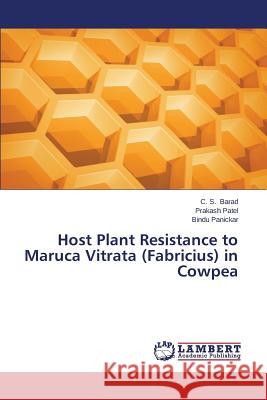Host Plant Resistance to Maruca Vitrata (Fabricius) in Cowpea » książka
Host Plant Resistance to Maruca Vitrata (Fabricius) in Cowpea
ISBN-13: 9783659624384 / Angielski / Miękka / 2014 / 112 str.
Cowpea Vigna unguiculata (L.) Walpers] is known for its versatility and adaptability to warm and dry conditions because of proven drought tolerance and thereby could be a more appropriate crop in current environmental changing scenario of global warming. The larvae of spotted pod borer are known to cause damage by webbing the leaves, bud, flower and pods together and feed inside on them. This typical feeding habit protects the larvae from natural enemies and other adverse factors, including insecticides. Host plant resistance to insect pests is an economically and ecologically preferred alternative as compared to other pest management strategies, particularly the synthetic pesticides. Plant characteristics, which make the cultivars less suitable or unsuitable for feeding, oviposition and development of an insect can be classified into two categories i.e. morphological (biophysical) and biochemical basis of resistance. Plant morphological characters such as flower colour, pod angle, pod size etc. and biochemicals like amino acids, total soluble sugar, protein, phenol, fiber, tannin etc. play important role in host plant resistance to Maruca vitrata.
Cowpea [Vigna unguiculata (L.) Walpers] is known for its versatility and adaptability to warm and dry conditions because of proven drought tolerance and thereby could be a more appropriate crop in current environmental changing scenario of global warming. The larvae of spotted pod borer are known to cause damage by webbing the leaves, bud, flower and pods together and feed inside on them. This typical feeding habit protects the larvae from natural enemies and other adverse factors, including insecticides. Host plant resistance to insect pests is an economically and ecologically preferred alternative as compared to other pest management strategies, particularly the synthetic pesticides. Plant characteristics, which make the cultivars less suitable or unsuitable for feeding, oviposition and development of an insect can be classified into two categories i.e. morphological (biophysical) and biochemical basis of resistance. Plant morphological characters such as flower colour, pod angle, pod size etc. and biochemicals like amino acids, total soluble sugar, protein, phenol, fiber, tannin etc. play important role in host plant resistance to Maruca vitrata.











